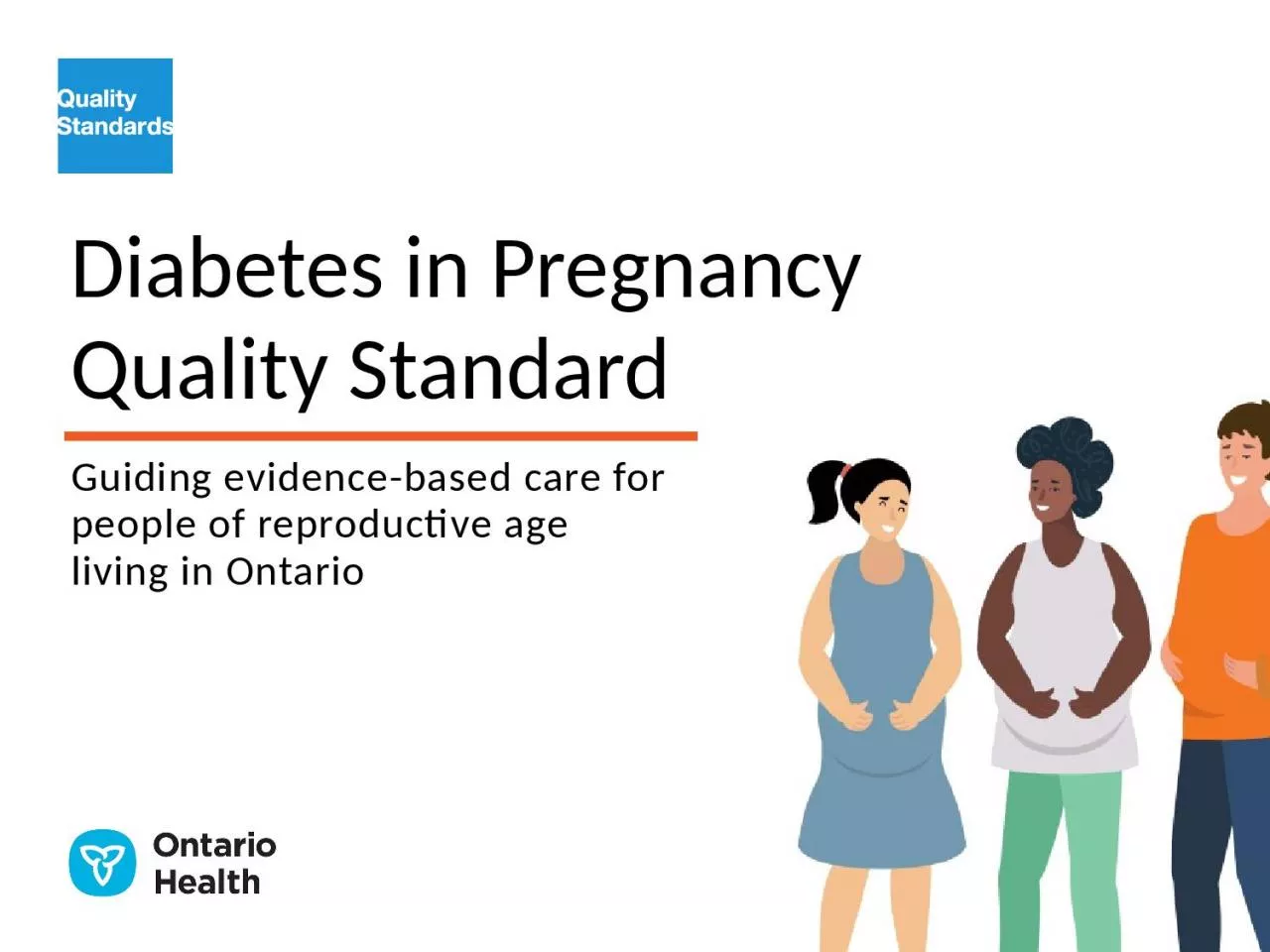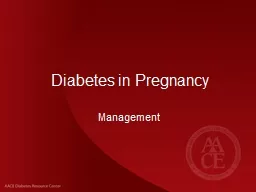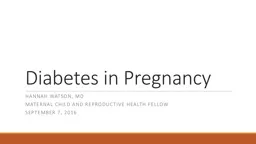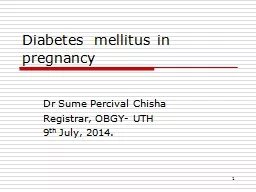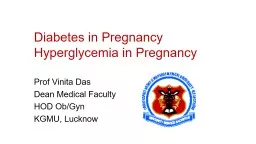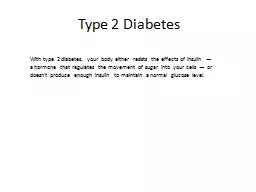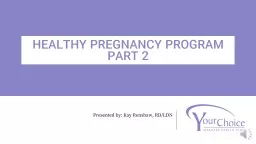PPT-Diabetes in Pregnancy Quality Standard
Author : jordyn | Published Date : 2022-06-11
Guiding evidencebased care for people of reproductive age living in Ontario Objectives Overview of quality standards What are they How are they used Why this quality
Presentation Embed Code
Download Presentation
Download Presentation The PPT/PDF document "Diabetes in Pregnancy Quality Standard" is the property of its rightful owner. Permission is granted to download and print the materials on this website for personal, non-commercial use only, and to display it on your personal computer provided you do not modify the materials and that you retain all copyright notices contained in the materials. By downloading content from our website, you accept the terms of this agreement.
Diabetes in Pregnancy Quality Standard: Transcript
Download Rules Of Document
"Diabetes in Pregnancy Quality Standard"The content belongs to its owner. You may download and print it for personal use, without modification, and keep all copyright notices. By downloading, you agree to these terms.
Related Documents

